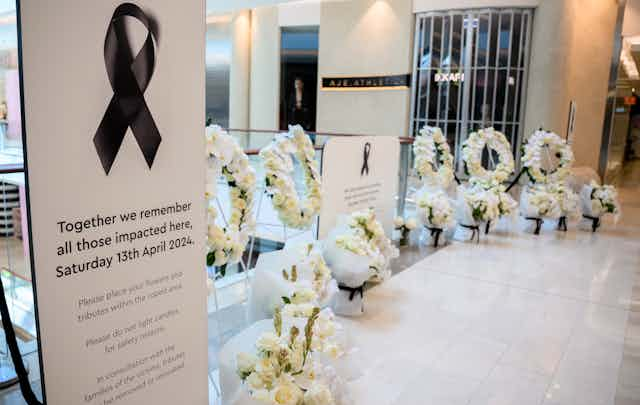Less than 24 hours after Ashlee Good was murdered in Bondi Junction, her family released a statement requesting the media take down photographs they had reproduced of Ashlee and her family without their consent. They said it had caused her loved ones extreme distress.
Their appeal is immediately understandable – many people would be upset by seeing photos of a loved one everywhere after such a traumatic event.
The media had evidently not received permission to use these photos in their news stories. Nor had they afforded the family any ethical sense of privacy when they circulated and displayed the photos across multiple platforms.
There has been valuable commentary about the issues surrounding the common journalistic practice of mining social media after a “newsworthy” death.
My PhD research offers further insight into a perspective that is rarely shared: the view of families bereaved through homicide.
While I cannot and do not presume to speak for Good’s family, I have interviewed families bereaved through homicide and they have shared their experience of photos of their loved one being in the media.
Read more: Why is the Sydney church stabbing an act of terrorism, but the Bondi tragedy isn't?
Private photos in the public domain
To the bereaved, photos of loved ones are deeply meaningful. They are more than mere objects, more than random captured moments.
They are wrapped up in specific memories and treated as keepsakes. They are representations of and tangible connections to the person who was taken from them.
When these photos enter the public domain following homicide, they become photos of a victim.
In this new domain, private photos serve altogether different purposes. They furnish media stories now and into the future. Their original context and personal meaning are typically overridden or removed, often along with families’ consent.
My research indicates this is an issue that persists long into the aftermath of homicide, well after media and public interest has dissipated.
In other words, it has the capacity to traumatise families for years.
Judging victims
While the mining of photos is one matter, how they are then used by the media and interpreted by the public is another.
My research uncovers how details in a photo can be highlighted and twisted at the expense of others. For example, bereaved families told me how hurtful it was when the media republished unflattering and inappropriate photos of their loved one that were just meant for friends and family.
One mother recalled how her son would do a silly pose and ruin their family photos. He was being a typical teenager, but that was not how he was perceived when the media reproduced those photos alongside their chosen narrative. Instead, the mother read comments made by the public underneath the article that said her son deserved to be murdered. The public judged her son based on those photos.
Similarly, a sister was distraught when the media pulled a photo from her social media of her and her brother where he did not look his best. They were at a party and there is a heart-warming story of the moment before the photo was taken. She explained she loves the photo; it is a happy memory for her, but she said it is for his family to love, not for the public to make assumptions about her brother.
These examples highlight how significant it is for families when the media take a photo out of context, without permission, and curate it to suit specific narratives.
Certainly, it is a practice that exacerbates trauma.
The right to control
I also spoke to families about how they decided which photographs they wanted in the public domain.
One family, whose daughter was murdered before social media was used as a journalistic tool, told me that when they were asked for photos, they were reflective and careful about the ones they shared, choosing to keep their favourite photos to themselves.
Another mother explained her reasoning behind the two photos that she handed over – one because it depicted her daughter as she was at the time of her murder, and the other where she was dressed up, because it showed what she would have been like if she had had the chance to get married.
Bereaved families want photos to be an accurate, presentable, and appropriate portrayal of their loved one.
The photos might be tied to a specific memory or feeling, they might maintain their privacy, they might be chosen because they do not require context, or they might be the one they believe their loved one would have wanted.
The bereaved deserve to be in control of that decision. Allowing them to make that choice themselves gives the bereaved agency at a time when they feel most powerless.

